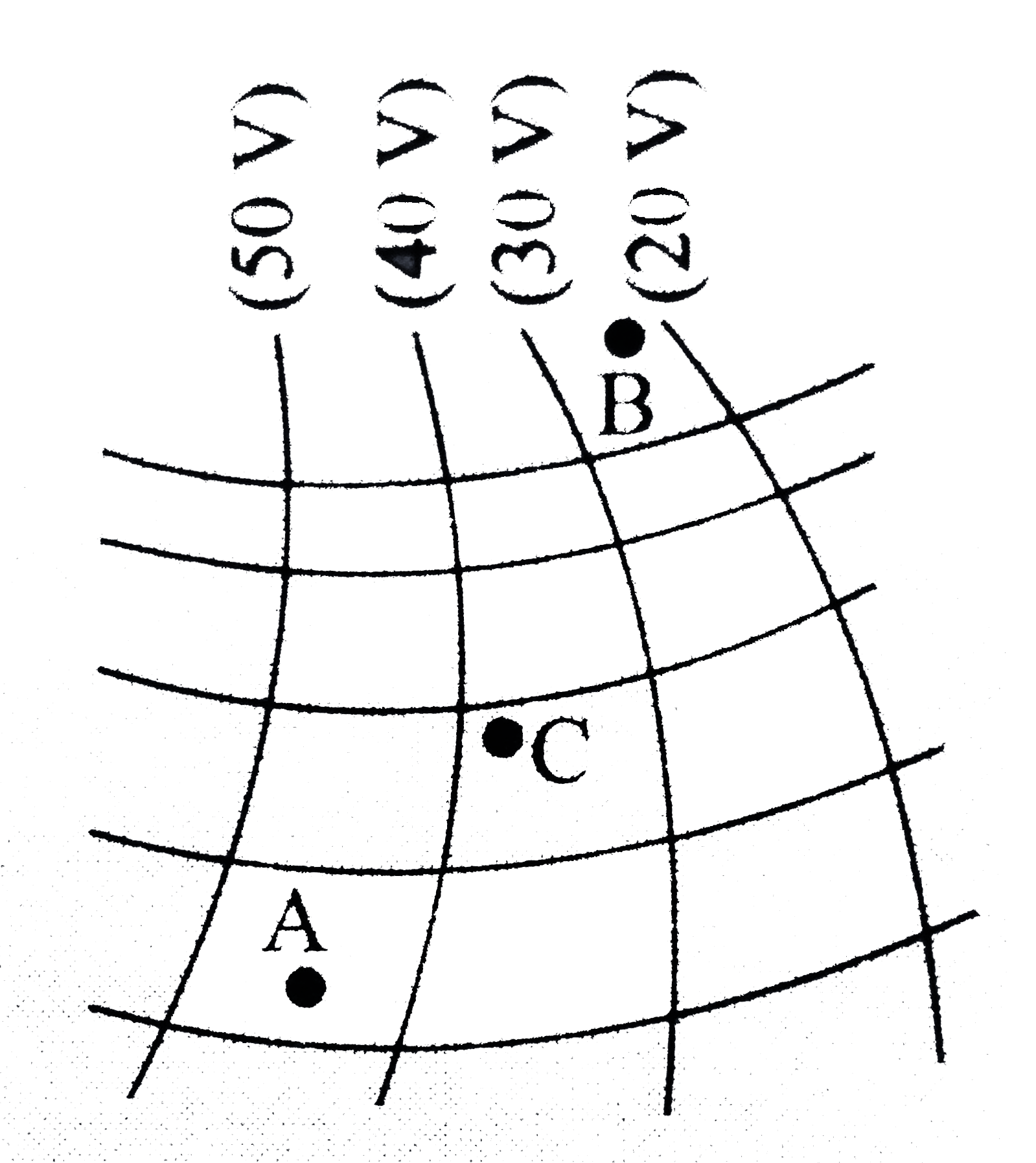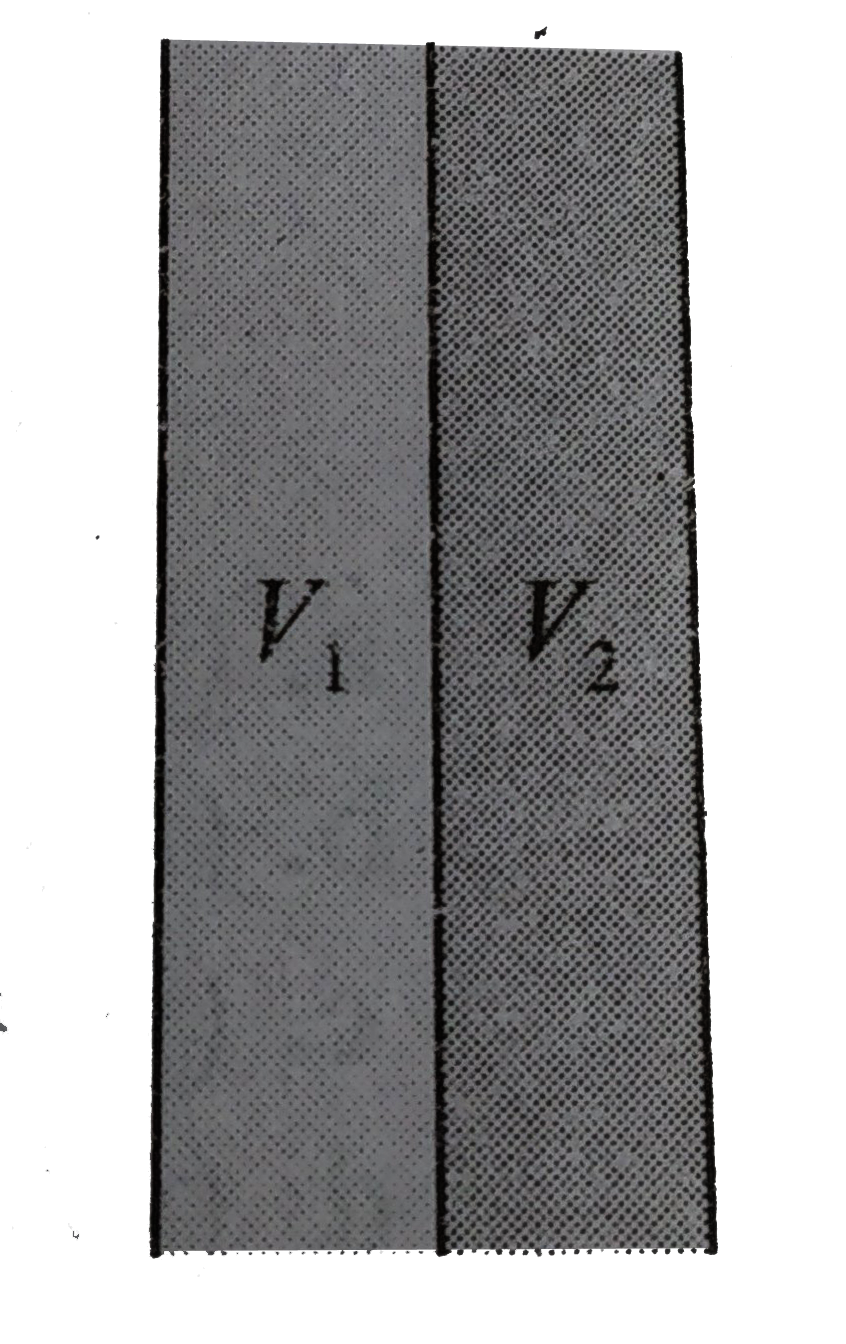In a region of constant potential
the electric field is uniform.
the electric field is zero.
there can be no charge inside the region.
both (b) and (c ) are correct.
The correct Answer is:D
To solve the problem regarding a region of constant potential, we will analyze the implications of having a constant electric potential and its relationship with the electric field and charge distribution.
1. Understanding Electric Potential and Electric Field:
- The electric field (E) is related to the electric potential (V) by the equation:
E=−dVdx
- Here, dVdx represents the change in electric potential with respect to distance.
2. Constant Potential:
- If the potential is constant in a region, it means that there is no change in potential with respect to distance:
dVdx=0
- Therefore, substituting this into the equation for electric field gives:
E=−0=0
- This indicates that the electric field in this region is zero.
3. Implications of Zero Electric Field:
- A zero electric field implies that there are no forces acting on charges in this region. Consequently, there cannot be any charge present in this region.
- According to Gauss's law, the electric flux through a closed surface is proportional to the charge enclosed:
ΦE=qenclosedϵ0
- Since the electric field is zero, the electric flux (ΦE) through any closed surface in this region is also zero.
4. Applying Gauss's Law:
- From Gauss's law, if the electric flux is zero, it follows that:
qenclosed=0
- This means that there are no charges enclosed within the region of constant potential.
5. Conclusion:
- In a region of constant potential, the electric field is zero, and there are no charges present. Therefore, the correct option is that there can be no charge inside the region.
Final Answer:
The correct conclusion is that there are no charges in a region of constant potential.
---
- The electric field (E) is related to the electric potential (V) by the equation:
E=−dVdx
- Here, dVdx represents the change in electric potential with respect to distance.
- If the potential is constant in a region, it means that there is no change in potential with respect to distance:
dVdx=0
- Therefore, substituting this into the equation for electric field gives:
E=−0=0
- This indicates that the electric field in this region is zero.
- A zero electric field implies that there are no forces acting on charges in this region. Consequently, there cannot be any charge present in this region.
- According to Gauss's law, the electric flux through a closed surface is proportional to the charge enclosed:
ΦE=qenclosedϵ0
- Since the electric field is zero, the electric flux (ΦE) through any closed surface in this region is also zero.
- From Gauss's law, if the electric flux is zero, it follows that:
qenclosed=0
- This means that there are no charges enclosed within the region of constant potential.
- In a region of constant potential, the electric field is zero, and there are no charges present. Therefore, the correct option is that there can be no charge inside the region.
The correct conclusion is that there are no charges in a region of constant potential.
Topper's Solved these Questions
- BOOK - NCERT FINGERTPS ENGLISHCHAPTER - ELECTROSTATIC POTENTIAL AND CAPACITANCE EXERCISE - HOTS5videos
ELECTROSTATIC POTENTIAL AND CAPACITANCE
- BOOK - NCERT FINGERTPS ENGLISHCHAPTER - ELECTROSTATIC POTENTIAL AND CAPACITANCE EXERCISE - EXEMPLAR PROBLEMS3videos
ELECTROSTATIC POTENTIAL AND CAPACITANCE
- BOOK - NCERT FINGERTPS ENGLISHCHAPTER - ELECTROMAGNETIC WAVESEXERCISE - Assertion And Reason15videos
ELECTROMAGNETIC WAVES
- BOOK - NCERT FINGERTPS ENGLISHCHAPTER - MAGNETISM AND MATTER EXERCISE - NCERT Exemplar5videos
MAGNETISM AND MATTER
Similar Questions
Across a metallic conductor of non-uniform cross-section a constant potential difference is applied. The quantity which remains constant is
View Solution(Figure 3.41) shows the lines of constant potential in region in which an electric field is present. The values of potentials are written in brackets. At which points A, B or C, the electric field is greatest.
 .View Solution
.View SolutionA proton and α - particle are accelerated with same potential difference and they enter in the region of constant magnetic field B perpendicular to the velocity of particles. Find the ratio of radius of curvature of α - particle.
View SolutionA cross a metallic conductor of non-uniform cross-section, a constant potential difference is applied. The quantity which remain (s) constant along the conductor is
View SolutionStatement I: If electric potential in certain region is constant, then the electric field must be zero in this region.
Statement II: →E=−dVdrˆv.View SolutionAn electron traveling in a uniform electric field passes from a region of potential V1 to a region of higher potential V2. Then
 View Solution
View SolutionWater will move from a region of higher water potential to a region of
View SolutionAssertion: In parallel combination of electrical appliances, total power consum ption is equal to the sum of the powers of the indivisual appliances.
Reason : Electrons move away from a region of lower potential to a region of higher potential.View SolutionA particle of mass m is present in a region where the potential energy of the particle depends on the x-coordinate according to the expression U=ax2−bx, where a and b are positive constant. The particle will perform.
View SolutionA particle with total energy E moves in one direction in a region where, the potential energy is U The acceleration of the particle is zero, where,
View Solution

